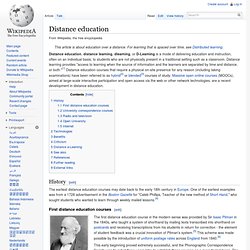

Www.ets.org/s/educator_licensure/ets_online_teaching_policy_final_report.pdf. Florida Virtual School. What is FLVS?

We're glad you asked! Florida Virtual School is a public school but, as you can probably tell, we're not just any public school. We're online. This means no matter where you live you can access more than 120 courses, from Geometry to AP Art History and everything in between. What's more, our courses are just as real as the dedicated, certified teachers who teach them.
iNACOL - International Association for K-12 Online Learning. Slategroup.uchicago.edu/2004Presentations/standardsforonline.pdf. Www.google.com/url?sa=t&rct=j&q=&esrc=s&source=web&cd=5&ved=0CF8QFjAE&url=http%3A%2F%2Fstandards.mivu.org%2F&ei=PRGXUMeZDImo8gS1pYCACw&usg=AFQjCNGE8Itz8ysis-qHWjV0yEVB77Ketw&sig2=_IPMwhFJPp-RDCtqjWpIjQ. Www.innosightinstitute.org/innosight/wp-content/uploads/2011/01/The-Rise-of-K-12-Blended-Learning.pdf. Innosight Institute. New.ipfw.edu/dotAsset/183314.pdf. Horizon-k12 - home. YouTube. Khan Academy. iTunes U - Learn anything, anywhere, anytime. Sugata Mitra: The child-driven education. Larry Lessig: Laws that choke creativity.
Thomas L. Friedman. History of the world twenty years from now, and they come to the chapter "Y2K to March 2004," what will they say was the most crucial development?

The attacks on the World Trade Center on 9/11 and the Iraq war? Or the convergence of technology and events that allowed India, China, and so many other countries to become part of the global supply chain for services and manufacturing, creating an explosion of wealth in the middle classes of the world's two biggest nations, giving them a huge new stake in the success of globalization? And with this "flattening" of the globe, which requires us to run faster in order to stay in place, has the world gotten too small and too fast for human beings and their political systems to adjust in a stable manner? In this brilliant new book, the award-winning New York Times columnist Thomas Friedman demystifies the brave new world for readers, allowing them to make sense of the often bewildering global scene unfolding before their eyes. Reviews. Common Core State Standards Initiative. Nets Standards. The Partnership for 21st Century Skills.
Information Age: People, Information & Technology. Internet Access and the New Divide. Nine Elements. Nine Themes of Digital Citizenship Digital citizenship can be defined as the norms of appropriate, responsible behavior with regard to technology use.

Connectivism. Connectivism is a hypothesis of learning which emphasizes the role of social and cultural context.

Connectivism is often associated with and proposes a perspective similar to Vygotsky's 'zone of proximal development' (ZPD), an idea later transposed into Engeström's (2001) Activity theory.[1] The relationship between work experience, learning, and knowledge, as expressed in the concept of ‘connectivity, is central to connectivism, motivating the theory's name.[2] It is somewhat similar to Bandura's Social Learning Theory that proposes that people learn through contact. The phrase "a learning theory for the digital age"[3] indicates the emphasis that connectivism gives to technology's effect on how people live, communicate and learn. Nodes and links[edit] The central aspect of connectivism is the metaphor of a network with nodes and connections.[4] In this metaphor, a node is anything that can be connected to another node such as an organization, information, data, feelings, and images.
So what is a Digital Native, a Digital Child, A Neo-Millennial or 21st Century Learner? - Janie Andrich - 21st Century Education. Net.educause.edu/ir/library/pdf/eqm0511.pdf. Group Activities in Distance Learning. Distance education. Distance education, distance learning, dlearning, or D-Learning is a mode of delivering education and instruction, often on an individual basis, to students who are not physically present in a traditional setting such as a classroom.

Distance learning provides "access to learning when the source of information and the learners are separated by time and distance, or both. "[1] Distance education courses that require a physical on-site presence for any reason (including taking examinations) have been referred to as hybrid[2] or blended[3] courses of study. Massive open online courses (MOOCs), aimed at large-scale interactive participation and open access via the web or other network technologies, are a recent development in distance education.
History[edit] The earliest distance education courses may date back to the early 18th century in Europe. First distance education courses[edit] Sir Isaac Pitman, pioneer of distance education in the 1840s. Secure Social Learning Network for Teachers and Students. Technology and Solutions Built for Education. Synchronous vs. Asynchronous Classes. Synchronous online classes are those that require students and instructors to be online at the same time.

Lectures, discussions, and presentations occur at a specific hour. All students must be online at that specific hour in order to participate. Asynchronous classes are just the opposite. Instructors provide materials, lectures, tests, and assignments that can be accessed at any time. Students may be given a timeframe – usually a one week window – during which they need to connect at least once or twice. There are benefits and drawbacks to both designs.
For others, asynchronous courses provide a better way to learn. Whatever your preference, you can find an online college that offers your ideal course design. As you’re researching synchronous and asynchronous options, you may want to ask college enrollment advisors which elements from the following list are used at their schools. Synchronous Class Elements: Asynchronous Class Elements: